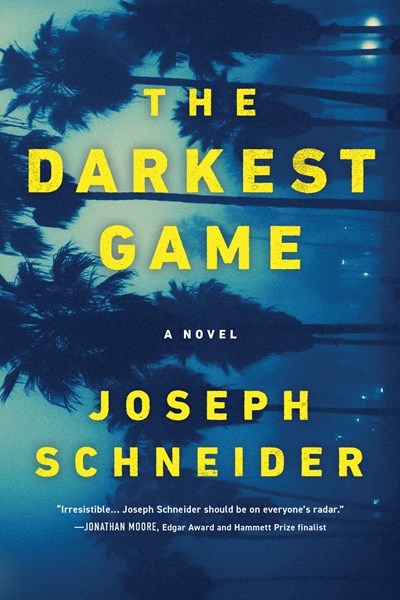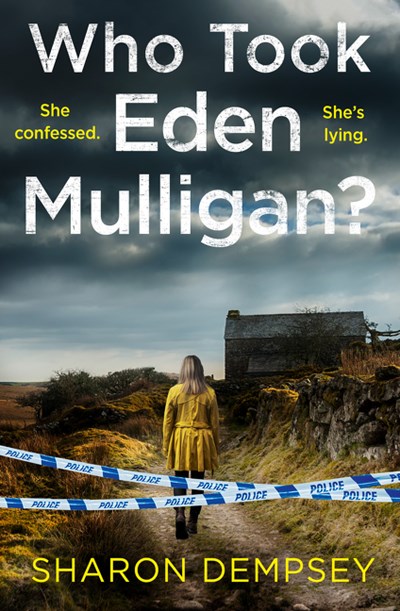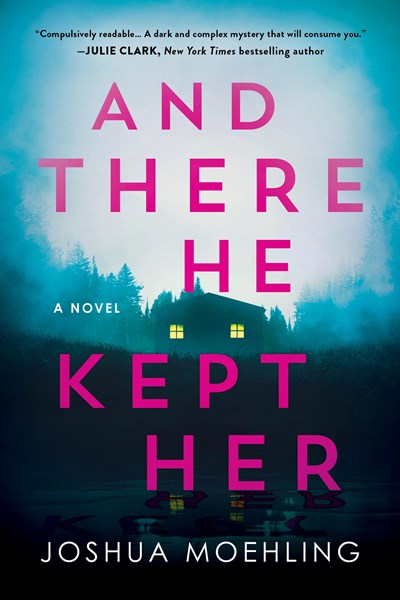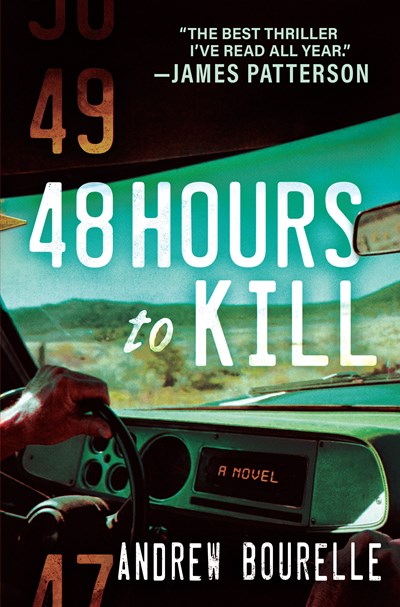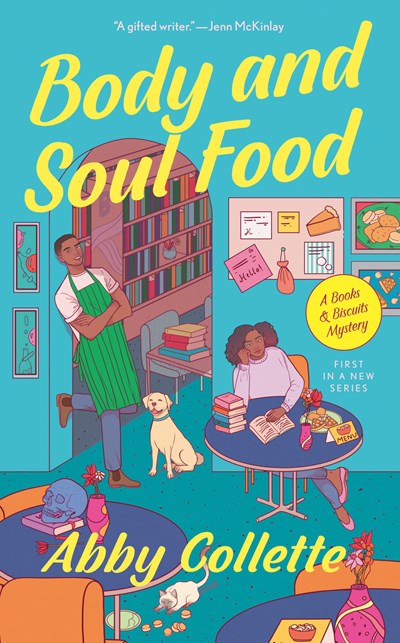Á la Anna Lee Huber’s Verity Kent and Stephanie Graves’ Olive Bright, Electra (Ellie) McDonnell has taken on a “man’s job” while much of the male workforce is away fighting World War II. Ellie is a heroine with a difference, though: she’s a former thief, from a London family that has called its safe-cracking ways to a halt. They’re now working as locksmiths and, in Ellie’s case, using those skills to aid the war effort. Ellie’s government handler, posh Major Ramsey, comes calling again in this second in the series (after A Peculiar Combination, 2021) when a young woman is found dead wearing an unusual, locked bracelet. Locksmithing again comes into play when a key turns up as part of the case, but it soon takes a back seat to Ellie’s other skills. This memorable, tough sleuth continues her investigation into the young woman’s death and her own mother’s long-ago imprisonment as the Blitz starts and a cousin at the warfront hasn’t been heard from. Happily, romance enters the picture, with Ellie pursued by both the major and a more down-to-earth family friend, Felix Lacey. The mysteries, danger, and emotional hills and valleys that are life in wartime will keep readers rapt here and wanting more from this almost-honest woman and her loving, protective circle.
Mystery & Detective
One of the most fascinating detectives to have come along in years, Tully Jarsdel isn’t your typical cop. He abandoned a doctoral program to attend the police academy. He was raised by two dads, one of whom escaped Iran as a refugee. And he’s a brainiac—with so much trivial knowledge that his partner, detective Oscar Morales, calls him Rain Man. But he’s perfectly suited to investigate the death of Dean Burken, who was violently murdered in his own home. Burken, it turns out, was a registrar at The Huntington, a museum, library, and garden. Registrars can be powerful people, and Tully is quick to realize that Burken was abusing his position—in a big way. From deep inside The Huntington to Catalina Island, off the coast of Los Angeles, Tully and Jarsdel pursue a narrative of fraud, corruption, and greed. Fortunately, the detective work is offset with family issues, as one of Tully’s parents has a serious health crisis and the other struggles to deal with his past in the Iranian revolution. Throughout, Tully remains introspective, elusive, and unsettled—making the prospect of a fourth book all the more compelling.
Perhaps inspired by the real-life disappearance of Northern Ireland mother Jean McConville, Dempsey invites us inside two crimes. The first is a murderous attack on five roommates, and then there’s the cold case resurrected by the message scrawled on their wall: Who Took Eden Mulligan? Eden’s children, now adults, have been adamant in the decades since her disappearance that she wouldn’t leave them, but the woman was an enigmatic outsider in “a pit of savagery and subterfuge.” A Protestant living in a Catholic area of Belfast, she looked a mite too good for neighbors to care about her fate. Detective Danny Stowe has lots to lose in his inquiries—he’s on thin ice after smashing a perpetrator’s head against a wall and needs this win. For that, and more personal reasons, he persuades his best friend from college, a forensic psychologist who’s enduring her own issues, to join the investigation. The old and new cases, and the broken families involved, bring forth the weariness of living in sectarian strife, a mundanity that’s broken by moments of horror. Dempsey excels in portraying the anger that emerges when the dreamy veil of struggle lifts to reveal political violence as “a cover for psychopaths.” Read this for both a satisfying puzzle and an inside look at a culture turned sour.
Simon, prolific author of the Witch Cats of Cambridge series, here mines her past as a rock critic. The tale looks at former rockers visiting their own past when they reunite for a benefit after former bandmate Aimee dies. During the concert, Gal Raver, frontwoman of the band and of the book, sees a familiar face in the crowd. It’s TK, the band’s old roadie, who’s later found dead in an alleyway behind the club. Walter, Aimee’s husband, is charged with murdering TK and seems curiously apathetic when Gal tries to help him fight the accusation. Finding out what happened involves numerous murky flashbacks to Gal’s past as a messy, angry drug and alcohol addict, and her behavior and the battle for fleeting success give the book a feeling of darkness. Simon’s evocative writing puts readers inside sweaty clubs that stink of beer and vomit (so much vomit!), and reaches its first height when describing the moment the fledgling band finally gels onstage. The music fades in the last part of the novel, which explores hard truths and the differing ways they can be remembered, with Simon’s depiction of Gal’s slowly unfurling memories a second high point. Note that rape is described here in some detail. For readers who enjoy dark stories and fans of music-themed mysteries.
Here’s the premise: two teens, a boy and a girl, break into Emmett Burr’s house in search of opiates. The house is remote, set on Sandy Lake in northern Minnesota, and the kids just assume that Emmett, old and immensely obese, will be passed out. But everything that can go wrong, does go wrong. Emmett shoots and kills the boy, while the girl, Jenny, is chained and left in a cell in the basement. It’s clear that she’s just the latest in a series of girls who’ve been locked up, abused, and eventually murdered. Fortunately, Jenny’s mother is quick to notice that her daughter is missing; she calls Sheriff’s Deputy Ben Packard, and the search is on. Ben, who recently moved from Minneapolis, spent his childhood summers on the lake; in fact, he’s related to Jenny. Packard’s search takes him to the dark underbelly of Sandy Lake, where alcoholism and drug abuse and violence and crime rule. Low-key Packard, who has his own secrets—he’s gay and just inching out of the closet—is as compelling and potentially as complex a cop as Louise Penny’s Armand Gamache. This is a remarkable debut—sharp, suspenseful, and emotionally powerful—sure to appeal to readers of Karin Slaughter and Lisa Gardner.
A mystery with all the right ingredients, in all the right proportions: compelling crime, eccentric characters, dishy police chief, fascinating location, and above all else, Lana Lewis, a quirky, smart, witty, and sarcastic protagonist. After getting laid off from her job as a journalist in Miami, Lana moved back to her hometown of Devil’s Beach, a barrier island north of the city, and opened Perkatory, a happening coffee shop. When Raina—who owns the hot yoga studio next door—goes missing, Lana dusts off her journalism creds and heads into the contentious, and gossip-ridden, world of yoga to cover the story for the local paper. But finding Raina takes a village, and Lana gets help from a wonderful cast, including her yoga-loving, hippie Dad—whose medical marijuana prescription is always filled—and Noah Garcia, the aforementioned police chief. Lana and Noah’s burgeoning relationship, despite plenty of professional conflict, is a strong element in the novel. But at the book’s heart is Lana, a complex character who’s recovering from a divorce, wary of romance, and uncertain about her career, yet with a great sense of humor. If I can’t spend the afternoon hanging out with Lana in Perkatory, then please get me the next volume in this series ASAP.
A gripping thriller that is begging to be made into a motion picture. Ethan Lockhart, serving time in a Nevada jail for armed robbery, is released on a 48 hour furlough to attend the funeral of his younger sister, Abby. Ethan is devastated—he and Abby were super tight—but he’s also suspicious: his sister Abby was clearly assaulted in her home, but her body was never found. Ethan suspects Shark, his former boss, a one-time minor loan shark who’s now a major Reno crime boss. Ethan teams up with Abby’s best friend, Whitney—sparks fly!—and they descend into the criminal underground he had hoped to have left behind. The plot never wavers, and the few subplots all add to the story. Bourelle really cranks up the pace—the book just flies—and each chapter is ingeniously named after how many hours are left before Ethan needs to turn himself in. Netflix, please get on this!
From the outside, Desiree Pierce had it all. Famous hip-hop producer father, starring role on a rich-kid reality show, a huge audience following her every diamond-studded move on Instagram. But her sister, Melina, or Lena, has waited years for the phone call saying that drugs have finally killed Desiree, and that moment is here. Fed up as she is with donning her metaphorical Super Black Woman cape, Lena drags it on, again, to start picking up the pieces. But the background to Desiree’s supposedly accidental death starts to look off. For starters, she was terrified of needles and never would have injected heroin like the police say. And what was she doing in Lena’s residential Bronx neighborhood, miles from her glitzy lifestyle? Lena’s fast-paced investigation of what she believes to be a murder takes her back to painful episodes with her family, a clan tight-knit enough to care deeply about one another but that at the same time can get exasperated to the point of estrangement. Twists combine with deft writing and compelling characters—especially the relatable Lena—to create a memorable novel that’s perfect for those who like tales of flawed love and strong women.
“Life owns a way of disappointing most,” notes a character in Lloyd’s meticulously written and researched debut, in which murder is hot on the heels of the disappointments. One of the killings is the goriest I’ve ever read: brace yourself for a man having his Adam’s apple bitten out, with the gruesome fruit spat out to roll across the floor. And that’s only a minor character, one of those enmeshed in the politics swirling through London’s grimy, cold winter of 1678, when paranoia about Catholic plots to kill the King and turn the populace toward popery abounds. A light in the gloom is real-life polymath Robert Hooke, who leaves his elaboratory experiments to investigate the murder of the book’s titular boy. The child is found with his blood entirely removed, dates written beside various wounds on his body, and a coded message left on his chest. Once Hooke’s newly invented means of creating a vacuum in a jar is employed to preserve the body, the sleuthing is afoot. London of the day is almost its own character here, with Lloyd shoving readers into the chill, stink, and fear for a wonderfully atmospheric time. Try this if you enjoyed Cathedral of the Sea by Ildefonso Falcones, which illuminates the same era, but in Barcelona
What’s better than a bookstore? Hardly anything, unless it’s a bookstore with a fabulous soul-food café, the business venture, and adventure, embarked on here by twins Koby Hill and Keaton Rutledge. The two are just getting to know each other, having been raised apart when Koby was put in foster care and Keaton adopted. Many twins in popular culture are portrayed as either freakishly similar or freakishly different, not that I’m bitter as a twin or anything, but these are regular siblings who get along while tiptoeing around their new relationship. Koby is protective of his sister and nervous that the flirting going on between Keaton and his best friend, Reef, will turn to more, a fear that ends when Keaton finds Reef dead on the subway. Reef knew he was in danger, it seems, and left his friend a legacy that leads the twins on a well-plotted quest for justice that’s filled with the quirky characters and yummy-food references readers expect in a cozy. I wished for recipes at the end, and those will be in the book when it’s released. After that, you can look forward to more books about Koby and Keaton, as this is the first in a new series. Collette’s (aka Abby L. Vandiver) work is sure to appeal to fans of Cleo Coyle’s Coffeehouse Mystery series, the Singaporean Mystery series by Ovidia Yu, and Mia P. Manansala’s Arsenic and Adobo.


